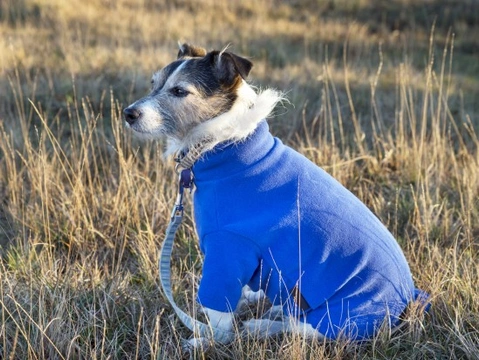
Do dogs need coats and other clothing in the winter?
When the weather starts to cool off, many of us begin to notice subtle changes in the behaviour of our dogs, such as a tendency to sit closer to the radiators, and possibly, appearing to feel the cold more when outside. This in turn leads to many dog owners wondering if their dogs might perhaps benefit from a special doggy coat or jumper in the cold, or even for some dogs, booties and other help weathering the weather!
While not all dog breeds need an added coat to help them to get through the winter, many can certainly benefit from an extra layer of protection! A range of factors will dictate whether or not a coat is a good idea for your dog, including things like their age, type of fur, breed, activity levels, and where you live.
While of course in the wild, dogs do not gain the benefit of humans to dress them and still manage just fine, it is worth pointing out that many of the dog breeds that we now keep here in the UK are not native to these shores, and may not be well equipped to weather our colder winters.
So, does your dog need a coat or other clothing during the winter? Read on to find out!
What temperature is “cold?”
In very mild winters, very few dogs will need a coat or other protection from the cold, although a raincoat may be helpful for some! Generally speaking, if the outside temperature when you walk your dog does not fall below freezing, the vast majority of breeds will be ok. This means that the time of day when you walk your dog or let them out will also potentially dictate whether or not they need a coat, as the temperature tends to rise a little during daylight hours.
However, every dog is different, and it is important to watch your individual dog to see how they are handling the weather. If they have a thin, fine coat and not much meat on their bones, they are of course much more likely to feel the cold than larger, furrier dogs.
Different breeds and different fur types
The breed or type of your dog will understandably dictate what type of coat they have, and how well they weather the winter. In terms of build, solid, stocky dogs with a reasonable amount of muscle tone and a little fat are much less likely to get cold than finely built dogs, although the type of fur that they have will also make a difference.
Dogs with a very short, single-layered coat are likely to be the first to feel the cold, and possibly need a little help. Even if your dog has a long coat, it is important to assess if it is also thick and layered, as some longer haired dogs still have a thin, fine coat that does not offer much protection from the weather.
Double-coated dog breeds that are designed for cold weather, such as the Siberian husky, Alaskan Malamute and German Shepherd dog are highly unlikely to need a coat, while small, fine Chihuahuas and lithe, thin-coated Greyhounds almost certainly will.
Some dogs are very borderline in terms of breed, such as the Staffordshire Bull Terrier; while these dogs are stocky and have plenty of padding to keep them warm, they do also have only a fine, short coat too.
Clothing for dogs
If you have decided that your dog will benefit from some extra heat in the winter, your next step is deciding upon what they need! There are waterproof coats that offer wind protection but not much insulation, padded coats, jumpers, and many other things too!
Start off with the lightest coat that you can find, as it is also important to ensure that your dog does not overheat, or come to rely on a particularly thick coat that they do not necessarily need. Waterproof coats are a better idea than jumpers and porous fabrics, as even if it is not raining, your dog is more than likely to get mucky at some point!
Finally, if your dog has light, delicate legs or thin pads on their paws, they are likely to find walking on snow and ice very uncomfortable, and even potentially risk chilblains and sores on their paws. Canine booties are the way to go in this instance, if you can convince your dog to wear them! Booties should be waterproof, padded, non slip, and most importantly, properly fitted!
When to use a coat or other clothing
Do not simply roll out your dog’s winter wardrobe as soon as there is a chill in the air; take your cues from your dog, and don’t get them dressed up until it is apparent that they are beginning to feel the cold. On milder days when it isn’t so chilly out, your dog may be able to go out comfortably without a coat sometimes too.
Finally, don’t put your dog’s coat on until you are ready to go out, and take it off and dry it as soon as you get home.



